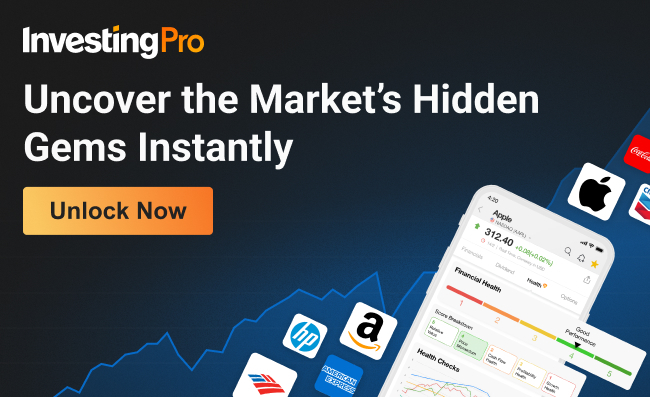- Today, we highlight four noteworthy commodities that are on the rise and the factors propelling their prices upward.
- We'll delve into each commodity, providing comprehensive insights on why they're worth considering for investment.
- Additionally, we'll explore the seasonal patterns of these commodities, revealing when their prices typically increase or decrease, and the reasons behind these fluctuations.
- If you invest in the stock market and want to get the most out of your portfolio, try InvestingPro! Subscribe HERE and take advantage of up to 38% discount for a limited time on your 1 year plan!
- Coffee prices are heavily influenced by the Brazilian harvest, as Brazil is the largest coffee producer globally.
- Sugar trading requires close monitoring of Brazil's conditions, as it is the leading producer and exporter of sugar as well. Weather events, like heavy rains during harvest season, can disrupt production and lead to price increases. Typically, sugar prices trend upwards from September to December and downwards from December onward.
- Orange juice production is concentrated in regions like Florida and Brazil, prone to hurricanes and adverse weather. Greater price volatility is observed in the second half of the year, with negative weather impacting orange production and subsequently lowering orange juice prices.
- Pig prices surge from late February as it takes six months for pigs to reach the desired weight for sale. The annual peak in prices occurs between May and July, as stock decreases due to earlier investor purchases.
- Cocoa prices are influenced by factors such as exchange rates, global macroeconomic conditions, political stability, weather, and pests. Traditionally, cocoa prices peak a few months before the onset of European winter.
- Corn prices may skyrocket due to a shortage of seeds, leading to plantation failures in the United States, the world's largest producer. Planting occurs in April-May, with harvesting in September. Prices are typically lowest during the planting season, peaking in July.
- Soybean prices start rising in February and reach their annual peak in June, especially during dry years. Prices decrease during summer months unless significant weather issues arise.
- Schroder ISF Commodity focuses on gold, oil, natural gas, corn, wheat, and soybeans.
- Allianz (ETR:ALVG) Dynamic Commodities invests in energy, industrial metals, precious metals, and agriculture.
- Threadneedle Enhanced Commodities has significant holdings in gold, natural gas, oil, copper, soybeans, corn, and silver.
- JPMorgan Funds Global Natural Resources primarily invests in oil companies like Shell (NYSE:SHEL), Chevron (NYSE:CVX), and TotalEnergies (NYSE:TTE), as well as mining companies like Rio Tinto (NYSE:RIO) and BHP (NYSE:BHP), and precious metal companies like Newmont Goldcorp Corp (NYSE:NEM).
- Schroder ISF Global Energy concentrates on oil and gas investments with companies such as Shell, Coterra Energy (NYSE:CTRA), BP (NYSE:BP), Galp Energy, and Devon Energy (NYSE:DVN).
- BGF World Energy holds investments in Shell, Chevron, ConocoPhillips (NYSE:COP), TotalEnergies, and EOG Resources (NYSE:EOG).
- Allianz Global Metals and Mining includes holdings in mining companies like BHP, Anglo American (JO:AGLJ), Teck Resources (NYSE:TECK), and First Quantum Minerals (OTC:FQVLF).
- The inverse relationship between interest rates and gold: when interest rates fall gold rises due to its increased attractiveness as a safe haven asset. In this case, investors have long been discounting that the Fed will lower rates this year.
- Geopolitical tensions: we continue with the Russia-Ukraine war (which is going on for a long time) and everything that happened between Israel and Gaza with other actors involved (Hamas, Iran, Houthis).
- Demand in India, one of the main buyers of gold, remains high and is expected to remain so throughout the year.
- Demand in China, the world's leading importer of gold, has also been better than expected after the Lunar New Year.
- Purchases by Central Banks.
- Arabica (New York): 4:15-13:30 (New York time).
- Robusta (New York): 4:00-12:30 (New York time).
- Arabica (London): 9:15-18:30 (CET).
- Robusta (London): 9:00-17:30 (CET).
- The price of coffee is highly dependent on the evolution of the crop in Brazil, which is one of the world's leading producers.
- The climate: If the weather conditions and meteorology are adverse and the cold weather makes an appearance, the price of coffee will rise.
- Costs: If there is an increase in distribution costs, the price of coffee will rise.
- If there is excess production, the price will fall.
- The exchange rate between the local currency of producing countries and the dollar.
- The production of the main countries. In Africa it is Ivory Coast (which is itself the world's largest producer and produces 31% of the world's total cocoa), Cameroon and Ghana. In Latin America we have Brazil, Colombia and the Dominican Republic. In Asia we have Indonesia, Malaysia and Papua New Guinea.
- Increased demand.
- Climate, droughts and soil erosion.
- Black pod disease and pests.
- Legislation. For example, Europe is the largest buyer of cocoa, so any change in legislation regarding sustainable cultivation affects.
- The London market (Euronext Liffe): quoted in pounds per ton.
- The New York market (ICE): quoted in dollars per tonne.
- First Majestic Silver (NYSE:AG)
- Fortuna Silver Mines Inc (NYSE:FSM) Mine
- Pan American Silver (NYSE:PAAS)
- iShares Silver Trust (NYSE:SLV): replicates the physical price of silver.
- ProShares Ultra Silver (NYSE:AGQ): is made up of silver futures contracts and leveraged at a 2:1 ratio.
- abrdn Physical Silver Shares ETF (NYSE:SIVR): replicates the physical price of silver.
- ProPicks: AI-managed portfolios of stocks with proven performance.
- ProTips: digestible information to simplify a large amount of complex financial data into a few words.
- Advanced Stock Finder: Search for the best stocks based on your expectations, taking into account hundreds of financial metrics.
- Historical financial data for thousands of stocks: So that fundamental analysis professionals can delve into all the details themselves.
- And many other services, not to mention those we plan to add in the near future.
Seasonal factors play a significant role in driving commodity prices. Understanding these seasonal patterns is crucial for investors looking to navigate this asset class effectively.
Here are some key factors influencing the prices of various commodities:
Commodity Funds to Consider
While these funds can make a great addition to a diversified portfolio, the following are the four selected commodities that you can consider including in your portfolio for growth.
1. Gold
It is always good to have some gold in our investment portfolio. Apart from its performance (over the last 20 years it has achieved an average return of more than +8% per year), it is very interesting for diversification and to protect us from adversities. A combination of stocks and gold makes a portfolio much more solid and balanced.
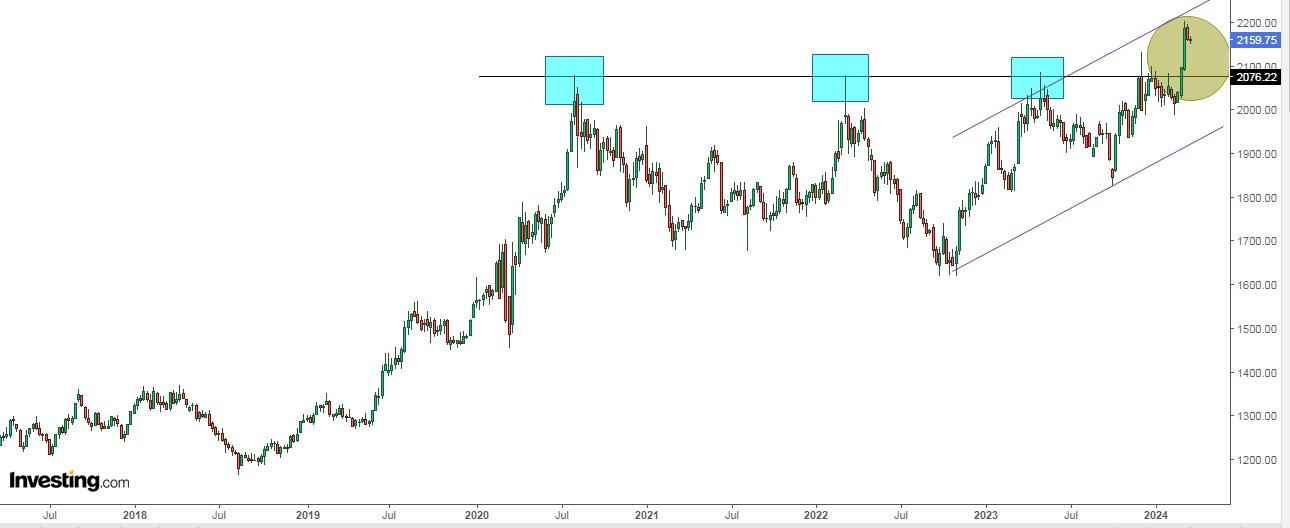
Its current bullish strength is due to:
If we take the last 10 years, the price at the end of August was +3.25% higher on average than at the beginning of the year. At the end of September, it was +8.22% higher on average. From September to the end of December, it was +13.29% higher.
If we take the last 50 years, the gold price is best between November and the end of February, when 3 of the 4 best monthly results of the year are usually produced. March is usually the worst month.
The best ETF is the SPDR Gold Shares (NYSE:GLD).
2. Coffee
Arabica coffee futures hit new two-month lows. Brazil's coffee exports were up nearly 48% in February compared to a year earlier. Production is expected to be up 5.8% from the previous year, which will generate a surplus of 1 million bags.
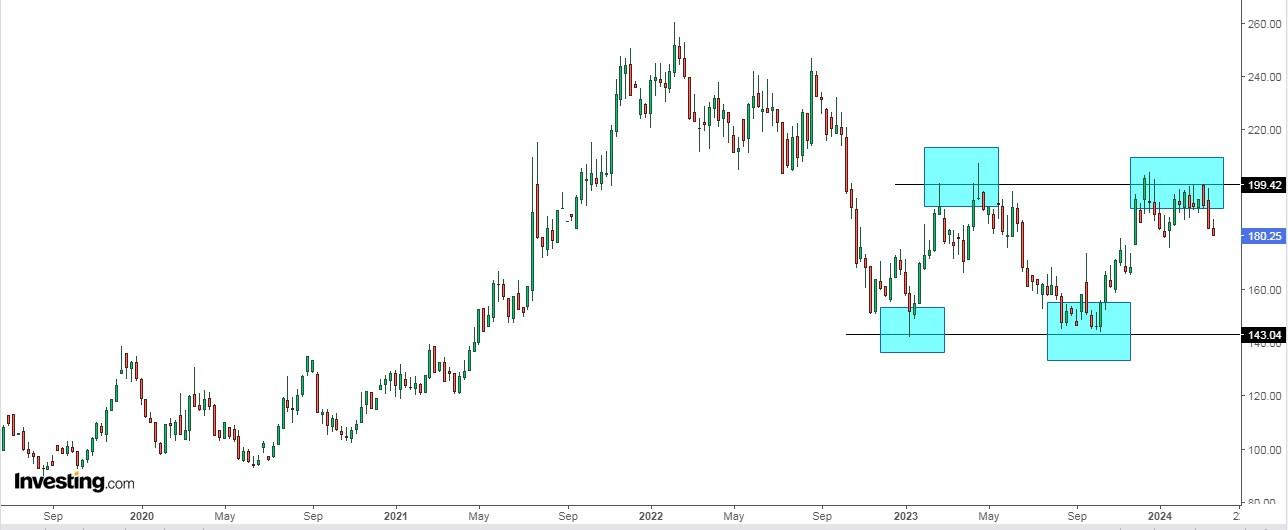
It is interesting because as you can see in the chart, it is in a sideways range and once it touches one of the extremes it bounces very well.
It is possible to trade with both Robusta and Arabica coffee, but if you are looking for something calmer, it is better to trade with Arabica coffee, and if you are looking for more movement and volatility, Robusta coffee is better.
The trading hours for robusta and arabica coffees, whether they are traded in the United States (New York) or in the United Kingdom (London).
What drives the price of coffee is:
A good ETF is WisdomTree Coffee (LON:COFF).
3. Cocoa
Cocoa futures remain strongly bullish and reached record highs due to lingering concerns about shortages in West African cocoa supplies.
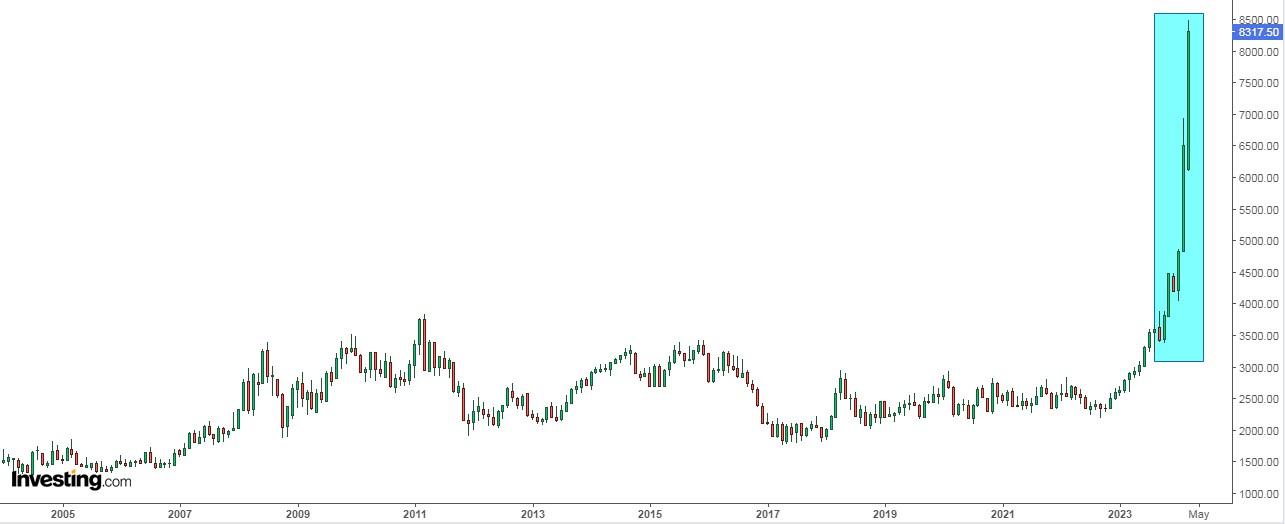
Certain cocoa plants in Côte d'Ivoire and Ghana have halted or reduced processing activities because they could not afford to buy beans.
At the same time, the International Cocoa Organization (ICCO) warned of unfavorable growing conditions and crop diseases.
What moves its price:
Cocoa has two futures markets:
CME cocoa futures trade in 10 tons and ICE futures are open Monday to Friday from 9:00 a.m. to 4:50 p.m. (London time). It is normally measured in tons, but can also be measured in kilograms. The price moves in ticks of $1/tonne and is equivalent to $10 a contract.
It is interesting because the shortage of supply is still in force and this favors the rise in its price.
A good ETF is WisdomTree Cocoa.
4. Silver
Silver rises to its highest levels in more than three months supported by rising geopolitical tensions and an improving industrial outlook in China, the top metal consumer.
The country's industrial production, fixed asset investment and retail sales grew more than expected.
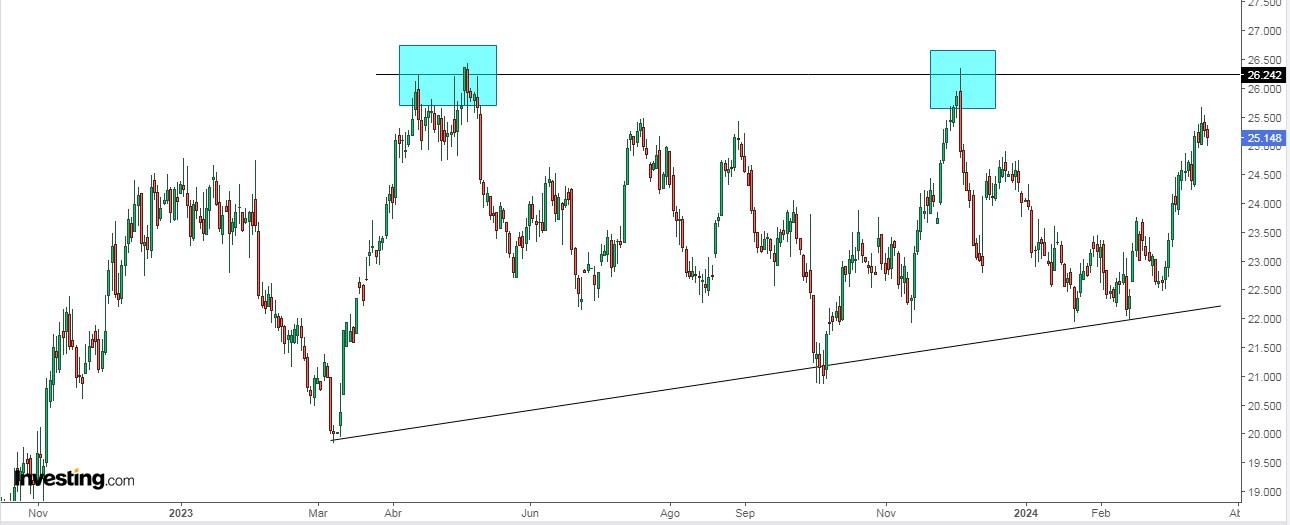
There is a seasonal pause in silver which is based on the fact that from the home stretch of one year and the first month and a half of the following year silver generally tends to rise and this has been detected for example for just over half a century ago, specifically during The last 52-53 years.
Concretely it is from the middle of the month of December (to be more exact the 16th) to the middle of the month of February (exactly the 20th-21st).
If we take this period, since 1968 silver has obtained with this seasonal pause an average increase of +7.20%.
The reason, according to Seasonax, is that in the industrial sector silver orders are placed on that date, so the demand increases substantially and with it the price of quotation.
It is possible to invest with futures, the most used contract has the symbol SI and each one of these contracts is equivalent to 5,000 ounces. There are also 1,000 ounce micro contracts on the COMEX futures exchange in Chicago.
You can also buy shares of companies that are involved in silver mining. Some of the big ones would be:
And concerning funds and ETFs, we would have:
***
Do you invest in the stock market? When and how to enter or exit? Try InvestingPro!
Take advantage of it HERE AND NOW! Click HERE, choose the plan you want for 1 or 2 years, and take advantage of your DISCOUNTS. Get from 10% to 50% by applying the code INVESTINGPRO1. Don't wait any longer!
With it, you will get:
Act fast and join the investment revolution - get your OFFER HERE!
Disclaimer: The author does not own any of these shares. This content, which is prepared for purely educational purposes, cannot be considered as investment advice.

